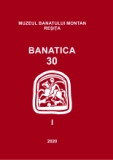Resurse animale exploatate în dava geto-dacica de la Carlomanesti, comuna Vernesti, judetul Buzau
Animal resources exploited in the Geto-Dacian dava from Carlomanesti, Vernesti commune, Buzau county
Author(s): Georgeta El SusiSubject(s): Archaeology, Economic history, Ancient World
Published by: Editura Mega Print SRL
Keywords: Cârlomănești; Getae; animal exploitation; domestic fows; hunting;
Summary/Abstract: The site is located about 13 km north-west from Buzău city, in the perimeter of Cârlomăneşti village, on an oval-shaped plateau of about 7500 square meters, at an altitude of 200 m. The vegetation of the zone is an admixture of hill forest and steppe elements. Obviously, the favorable position was suitable for agriculture, animal breeding, and hunting as illustrated by faunal analysis. Since prehistory the area has enjoyed a proper natural protection, so an important Monteoru settlement and an impressive Geto-Dacian dava, dated in the 2nd -1 st centuries BC had developed over there. An impressive and diversified archaeological material has been recovered over time including a large amount of animal bones. The first faunal sample was collected during 1973-1975's campaigns counting for 2,818 bones. The second sample we are talking about was gathered during 2005-2012’ campaigns and consists of 12,483 bones. The mammals account for 98.64%, birds 0.74% and fish 0.69%. Fish remains originate in freshwater species, as carp, pike, catfish etc. Of 12,313 mammal bones, 5,274 fragments (42.25 %) are not exactly assigned to species. Of 7,039 identified bones, 6,486 (98.64%) belong to domestic mammals and 553 bones (7.86%) to the wilds. The pig bones prevail among domesticates, its share is 32.6%. The small ruminants rank the second with 27.87% followed by cattle with 26.34% and equids with 4.66%. To note the presence of donkey and mule remains among domestic species. By compare with the former sample from Cârlomăneşti, some changes in the share of the main domestic mammals occur. The cattle share keep unchanged, they are quoted by 26% in both samples. Variations occur only in the ovicaprids/pig report. The small ruminants prevail by 41.4% in the former sample against 27.8% in the second. Pig is quoted only by 24.7% against 32.6. The hunting percentage is around 7%. The pig age-class distribution suggests a low percentage of individuals slaughtered below 6 months (11.92%), 15.6% between 6-12 months, 57.8% between 1-2 years, 10% between 2-5 years (especially between 2-2.5 years), and 0.9% over 5 years. The stock breeding (animals slaughtered over 2-3 years) is 11%. The report male/female is 17/5 on maxillary remainders and 19/6 on mandibles. However, this rate suggests the use of females for farrowing and the males, predominantly for meat. In case of cattle, of 47 individuals suggested by dentition, 14.9% were slaughtered below one year, 17.02% below two years, 29.79% below three years, and 38.29% over this limit. Of the specimens exceeding 3-4 years, about 23.4% were killed between 3(4)-6 years, 10.6% between 6-9 years, and 6.38% much later. Consequently, few slaughters of calves are registered, preserving an important stock to stimulate dairy production. A large proportion (40%) of specimens was kept to an advanced stage for by-products. Even if the rate of immature bovines is about 47 %, the beef consumption was not specific to Dacians’ diet, rather the milk-based products. The further age-class distribution was suggested in case of goat. No slaughters have done before 2 months, about 13.7 % between 2-6 months, and 10.34% between 6-12 months. One third of the specimens were cut off between 1-2 years and 20% between 2-4 years meaning slaughter for flesh and reducing the number of low output goats. 24% is the rate of animals killed between 4-6 years, suggesting milk, and wool exploitation. Senile specimens were not found. The age profiles of the sheep are something different than goat. There are no animals slaughtered below 2 months and only 4.76% between 2-6 months. The share increases at 23.8% between 6-12 months, meaning slaughters for a mutton of good quality. Only 19% were slaughtered between 1-2 years and 23% between 2-4 years; that means the using of the mutton of males, as well the reformation the flock, by cutting the barren ewes or with diminished output. A small percent was kept between 4-6 years, about 19% and 9.5% over 6 years, meaning milk and wool exploitation. The specific vegetation and rugged area were propitious mostly to goat breeding. His number overlaps the sheep so, of 71 ovicaprids, 29 are goats (40.8%) and 21 sheep (29.6%). Of the 12 equids identified, at least one-third or more were sub-adulte specimens. Excepting three of them, four individuals exceeded 10 years; the others were slaughtered at an adult stage. For sure horse was occasionally eaten; at least this is suggested by the bony sample.
Journal: BANATICA
- Issue Year: 1/2020
- Issue No: 30
- Page Range: 73-115
- Page Count: 43
- Language: Romanian

